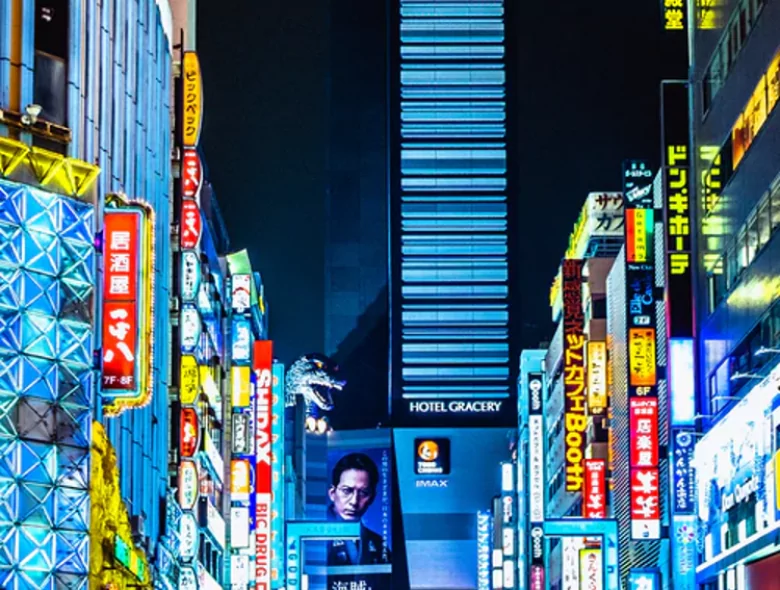Navigating around Japan can be troublesome, and you may have trouble thinking of some basic things you will need. Check out our article for helpful kanji and kana.
Japan has been growing in popularity as a travel destination for many years. It has seen growing numbers every season and there are no signs of it slowing down, pandemics aside. For many visitors, it will be the first time that they encounter Japanese writing and language. Going to Japan will show that in the major city areas there is a lot of English around the city. In the areas that see the higher volume of tourism, there is more English available. This is not the norm for the rest of the country and you may find yourself confused when trying to get around your area.
In this article, we will look at some basic and helpful kanji and kana that you will encounter in Japan. These will appear frequently and can help understand the menu, the area, and the buildings you will be in.

Hiragana and Katakana
The most important step to take is to learn Japans’ created alphabets of hiragana and katakana. Hiragana was created to accompany the Chinese kanji characters that they use for writing. There are a total of 92 characters between the two. Each set of characters has its uses when used in writing and speaking.
Hiragana is mainly used with kanji to create words and sentences in Japanese. They mimic all the kanji vocal soundings and are used in many instances to end sentences. They are also used as prepositions to be place holders for to, the, in, and others. There are some words in the Japanese language that were created with hiragana and have no kanji spelling equivalent. You will see mixtures of hiragana and katakana on billboards and posters at train stations and the street.
Katakana was created to represent borrowed words from other languages. Anything that does not have a Japanese equivalent or is more popular to simply say it the native way, will be spelled using these characters. These are extremely useful since many restaurants that serve dishes that come from other countries spell them in katakana. The same applies to many buildings and services. By studying this alphabet, you can get a better understanding of how Japanese pronunciation od foreign words will sound. It will help train your ears to pick out those words in conversation and announcements.
The characters are not difficult to learn and should take about two weeks to memorize. If you aren’t planning to memorize them, you can buy books that have both sets of characters that you can use as a reference. Your smartphone is also an excellent resource when learning languages. Learning these characters will also help when you are shopping for food or souvenirs.

Food and Restaurants
First, we will look at food and restaurants and what kanji or kana will be encountered most. The bigger restaurant chains will have pictures in their menus but some still have kanji and kana only.
食べる(ta-be-ru)- It means to eat. You will see the first kanji in most restaurants. They signify that there is food being served there, or that is an all you can eat type of place (食べ放題- ta-be-ho-u-dai).
飲む(no-mu)- Nomu means to drink. You will see the 飲 character to signify that there are drinks or that you are looking at the drink menu. There is all you can drink places as well (飲み放題).
カレー – Curry and rice
スープ – Soup
ハンバーガー – Hamburger
ラーメン – Ramen
そば – Soba noodles are buckwheat noodles that you usually dip in a sauce before eating.
餃子(gi-yo-u-za) – Gyouza is grilled or pan-fried dumplings that are popular when drinking beer.
These are a few common terms that you will run into at most restaurants. Keep your smartphone handy in case your server can’t speak English

Directions
We will look at some basic directional instructions to help when looking at maps or signs. These can be used in buildings and other places as well. You don’t have to memorize the words but it helps to be familiar with them.
北(ki-ta)- North
南(mi-na-mi)-South
東(hi-ga-shi)- East
西(ni-shi)- West
口(gu-chi)- This is attached to the end of a direction to signify an entrance or an exit. Kitaguchi for the north gate, exit, or entrance.
These are the basic points for you to follow or ask for when you are lost. If you are looking These basic words will assist you whenever you find yourself in a pinch.

Buildings
Buildings share many of the same kanji as train stations and other simple directional markers. There are a few extra words and letters you may see at the registers or near the exits.
入り口(i-ri-gu-ch)- Entrance or enter here.
出口(de-gu-chi)- Exit or exit here.
チェックアウト- Check out
サービスカウンター – Service counter
セルフチェックアウト- Self check out
These will help you when standing in line or looking for the exits. There are usually signs with footsteps on them to show where you should stand. Try to be polite when asking your questions so the workers can help you as fast as possible.
These are only a few words for you to look at before going to Japan. They won’t make you fluent or conversational, but they will help lessen the level of stress you may encounter when trying to do simple tasks there. Try to say the words slowly and clearly to get the best results from those who are trying to help you. If you do that your trip will be more enjoyable.



